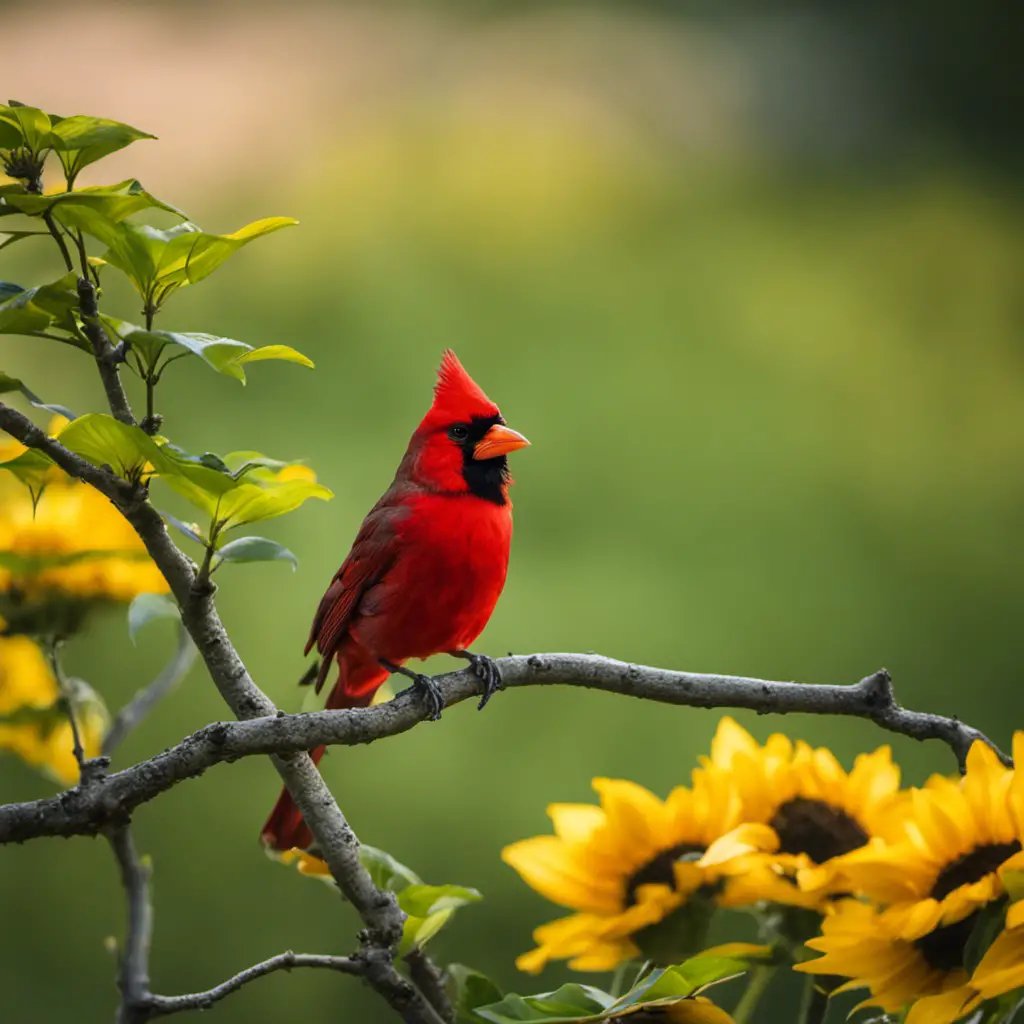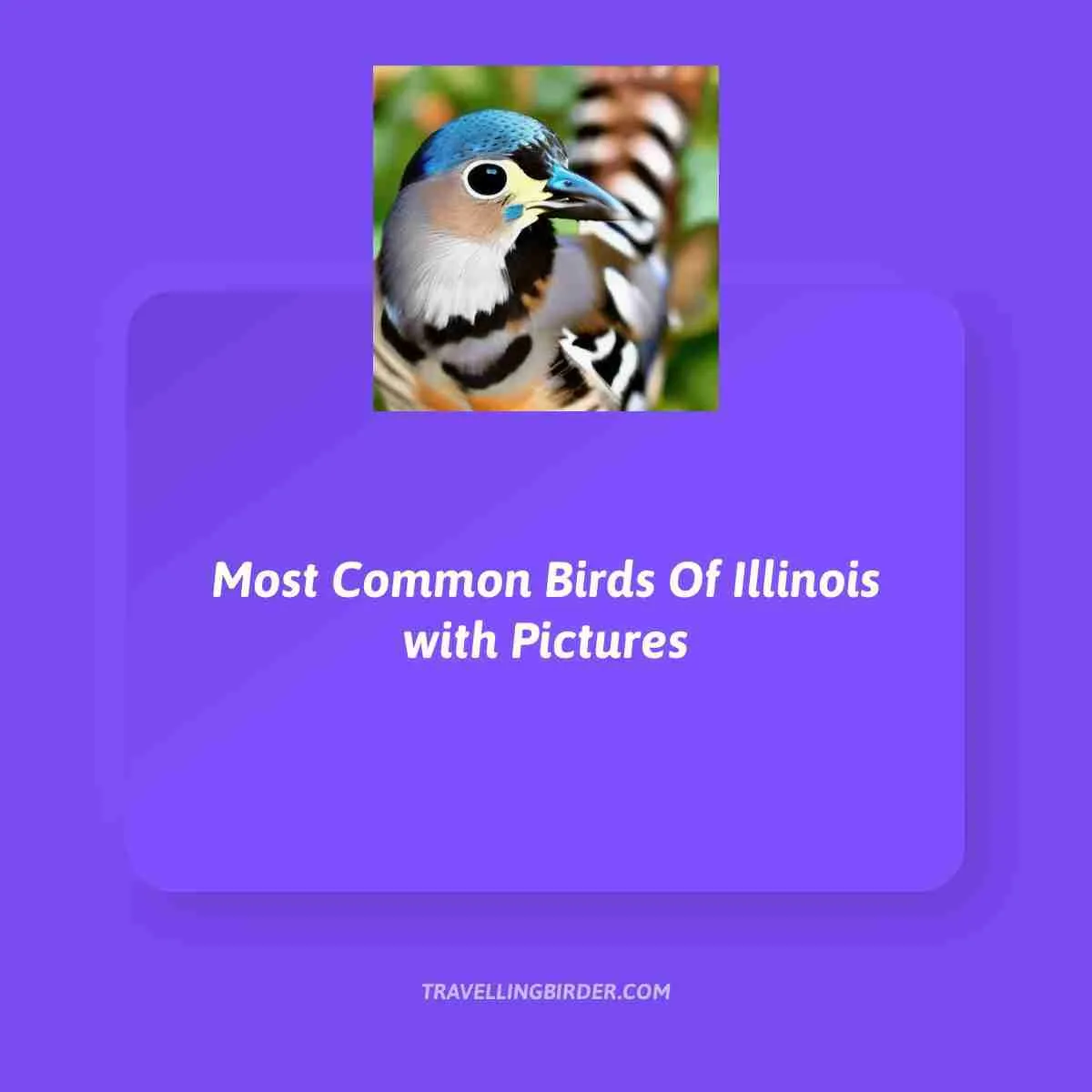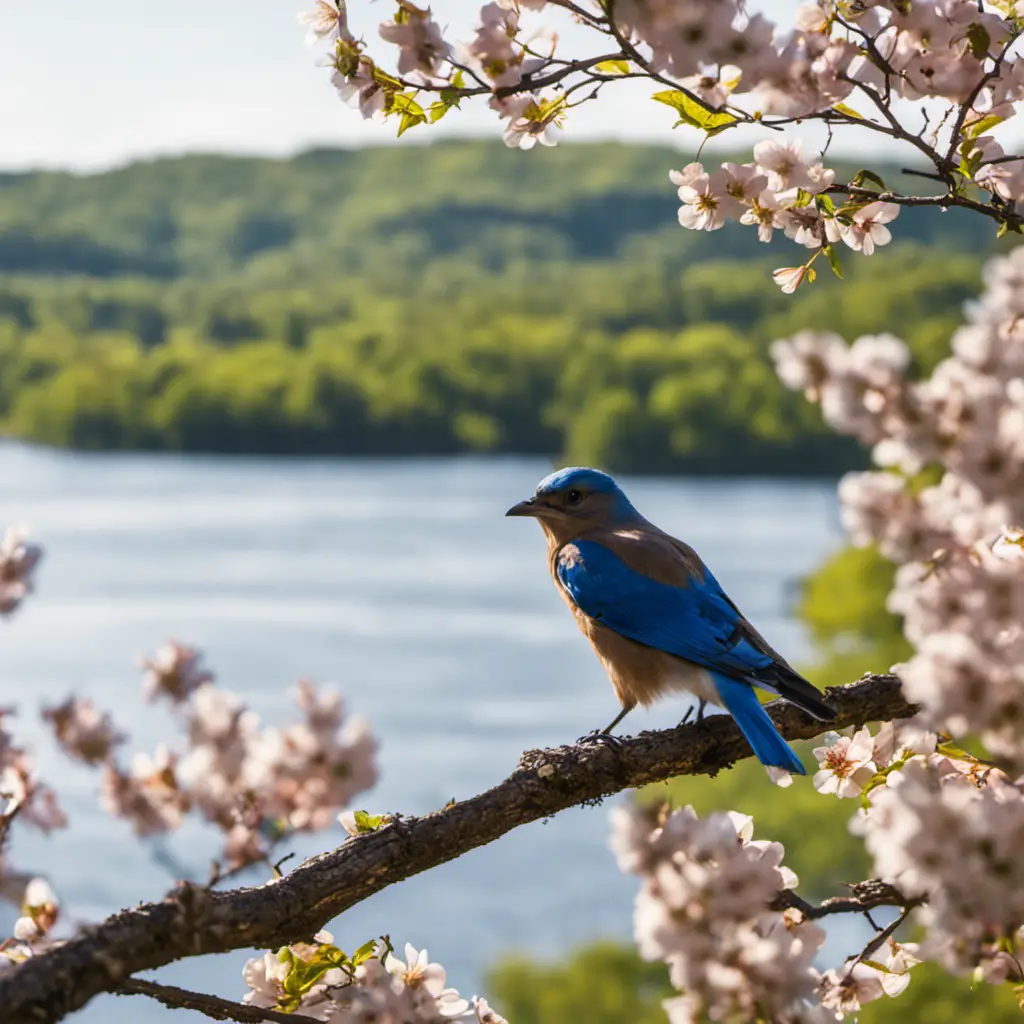Welcome to the world of birds in Virginia! Here, you’ll encounter a fascinating array of species, each with their own unique traits and behaviors.
From the vibrant American Robin and the striking Northern Cardinal to the gentle Mourning Dove and the lively Carolina Chickadee, Virginia is a haven for birdwatchers.
Get ready to explore the skies and learn about the enchanting Tufted Titmouse, the graceful Cedar Waxwing, the vibrant Baltimore Oriole, and many more incredible avian creatures that call Virginia home.
Key Takeaways
- Virginia is home to a diverse range of bird species, including common birds like the American Robin, Northern Cardinal, Mourning Dove, Carolina Chickadee, and Tufted Titmouse.
- Woodpeckers are also prevalent in Virginia, with species like the Downy Woodpecker and Red-bellied Woodpecker being easily recognizable.
- Songbirds such as the Carolina Wren, Song Sparrow, White-breasted Nuthatch, Chipping Sparrow, and Indigo Bunting contribute to the vibrant bird population in Virginia.
- Virginia’s natural landscapes support bird species like the Eastern Bluebird, Gray Catbird, and Yellow Warbler, with conservation efforts leading to an increase in their numbers. Other notable birds in Virginia include the Blue Jay, European Starling, and Common Grackle.
American Robin
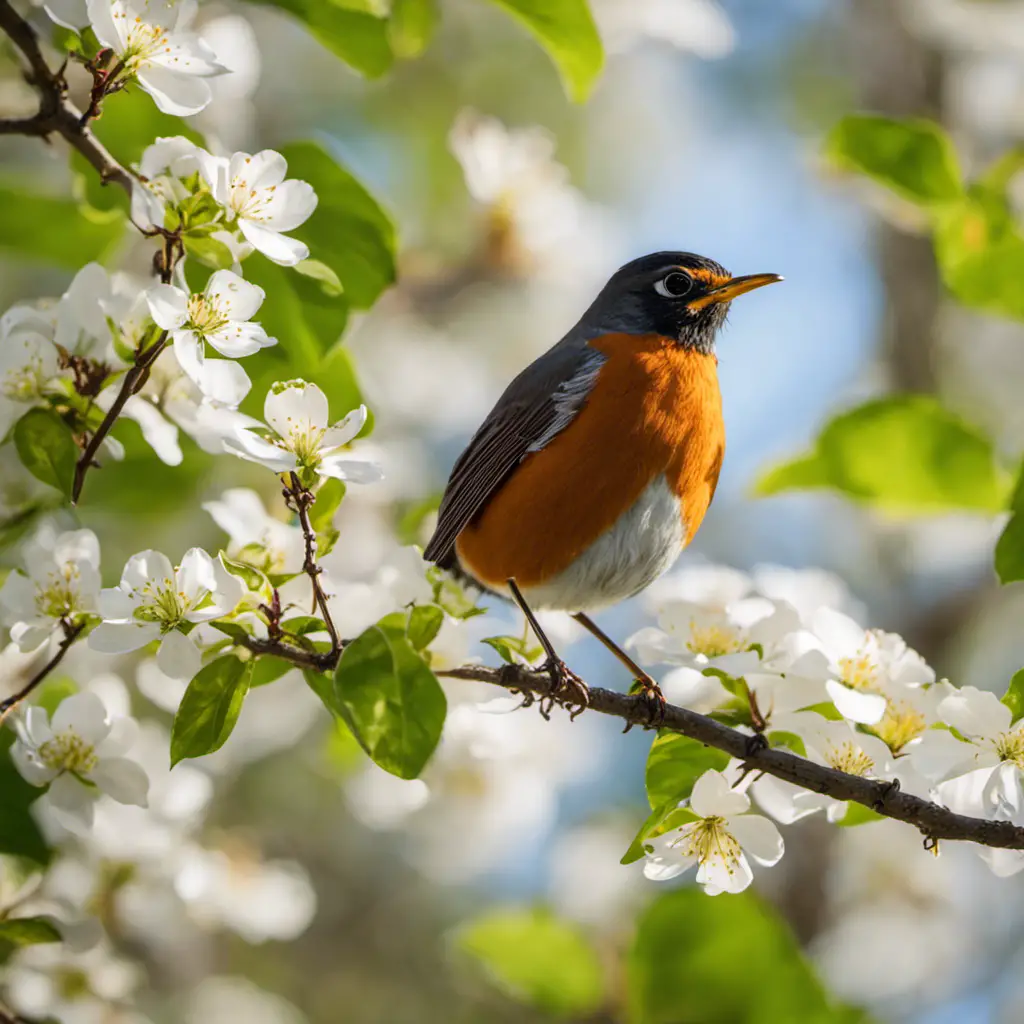
You’ll love observing the American Robin’s singing during the early morning hours. This iconic bird is a common sight in Virginia, with its vibrant orange breast and distinctive song.
The American Robin is known for its adaptable nature and can be found in various habitats, including forests, woodlands, gardens, and suburban areas. It prefers areas with open spaces and trees for nesting and foraging.
During breeding season, the male American Robin establishes its territory and attracts a mate through its melodious song. The female builds a cup-shaped nest using grass, twigs, and mud. The American Robin typically lays a clutch of 3-5 blue eggs, which hatch within two weeks.
Both parents participate in feeding the chicks until they fledge after about two weeks. It’s fascinating to witness their breeding behavior as they raise their young.
Northern Cardinal
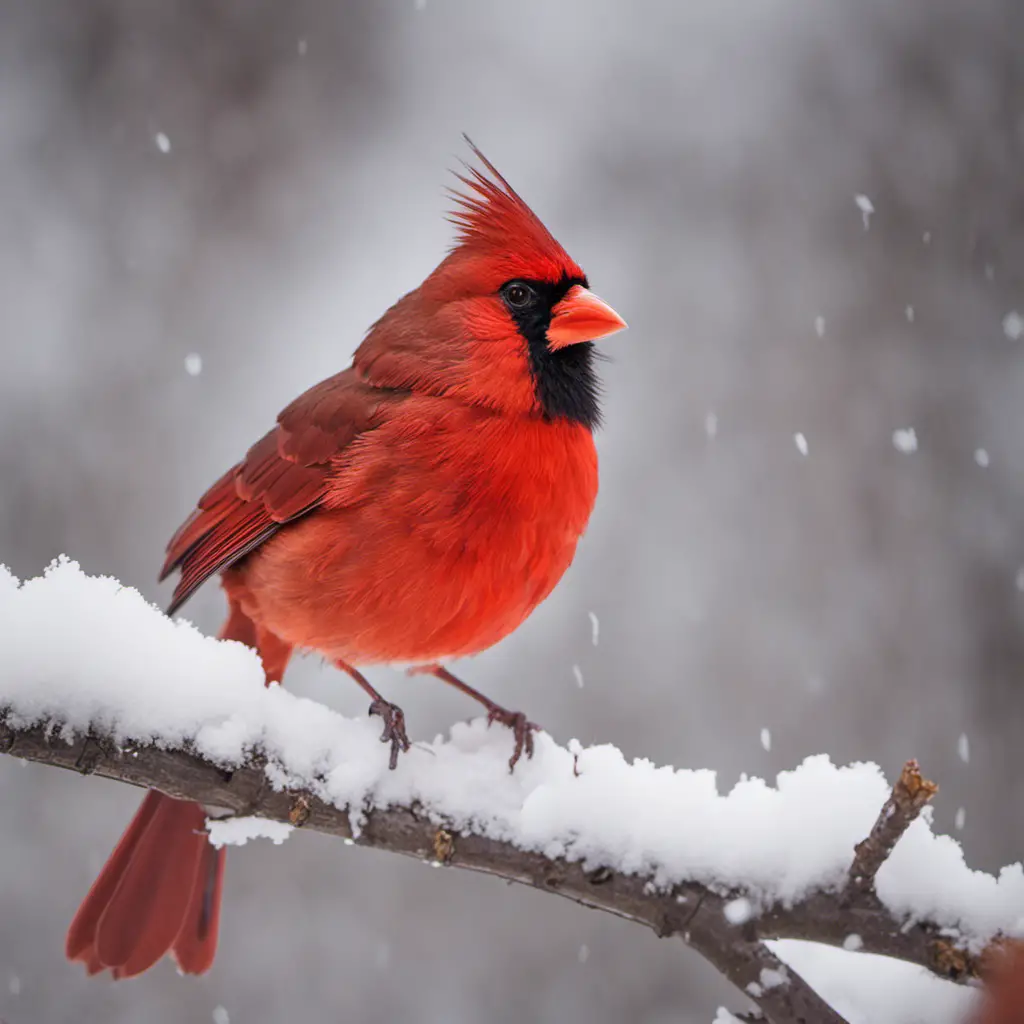
You might be surprised to learn that the Northern Cardinal isn’t only a beautiful bird but also a year-round resident in Virginia. This striking bird is known for its vibrant red plumage, prominent crest, and distinctive black mask around its eyes.
The Northern Cardinal is commonly found in a variety of habitats, including woodlands, shrubby areas, and suburban gardens. Its habitat preferences include areas with dense vegetation and access to food sources such as seeds and insects.
In terms of behavioral patterns, the Northern Cardinal is known for its melodious song, which is often heard during the breeding season. Males are particularly vocal, using their song to establish territory and attract mates. Additionally, they’re known to aggressively defend their territory against intruders.
Mourning Dove
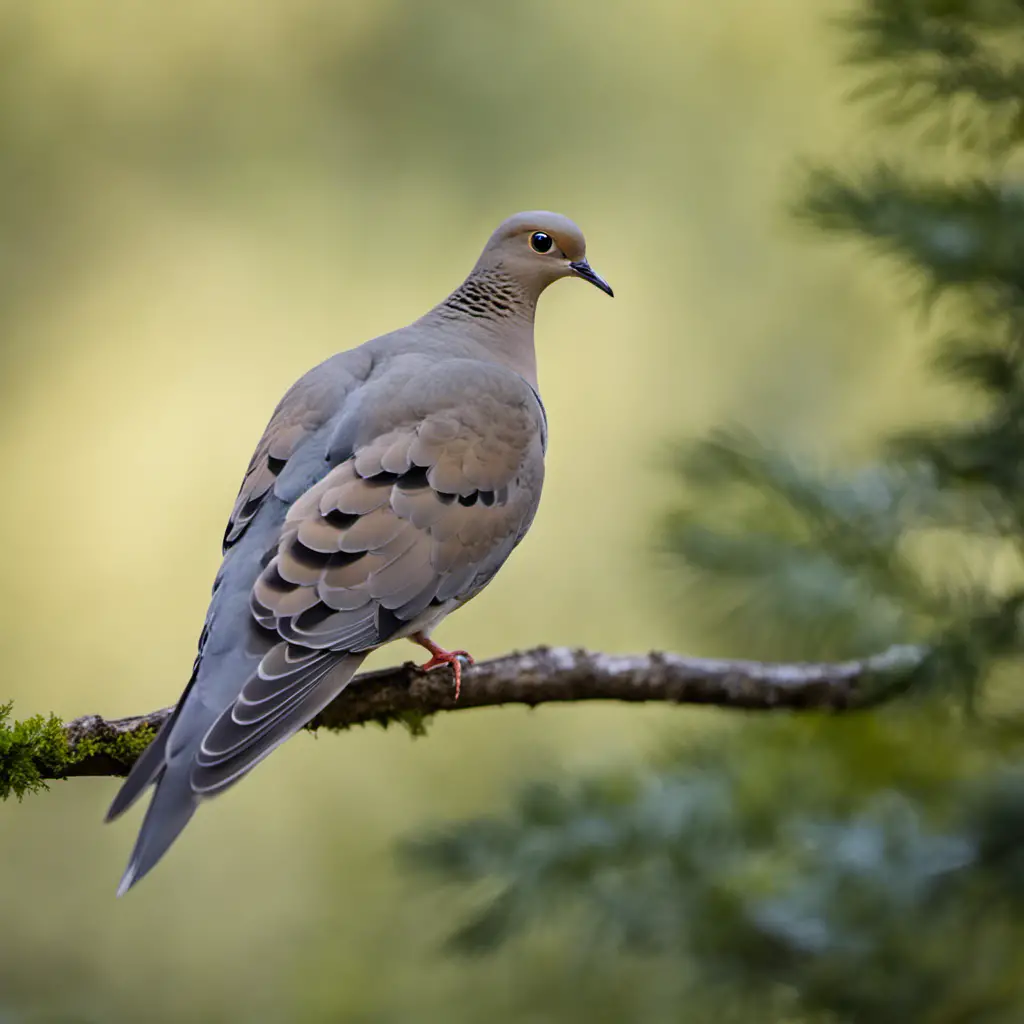
You’ll be amazed by the number of Mourning Doves you can spot in Virginia. These graceful birds are abundant throughout the state, making them a familiar sight in both rural and urban areas.
Mourning Doves are known for their gentle cooing calls, which can be heard throughout the day. Their behavioral patterns include feeding on the ground, often in small groups, and flying swiftly with a characteristic whistling sound. They prefer open habitats such as fields, meadows, and forest edges, where they can find ample food sources like seeds and grains.
When it comes to nesting, Mourning Doves build simple nests made of twigs and grasses, usually in trees or shrubs. They’re monogamous and may raise multiple broods in a season.
Mourning Doves are fascinating birds to observe, with their unique behaviors and adaptability to various habitats in Virginia.
Carolina Chickadee
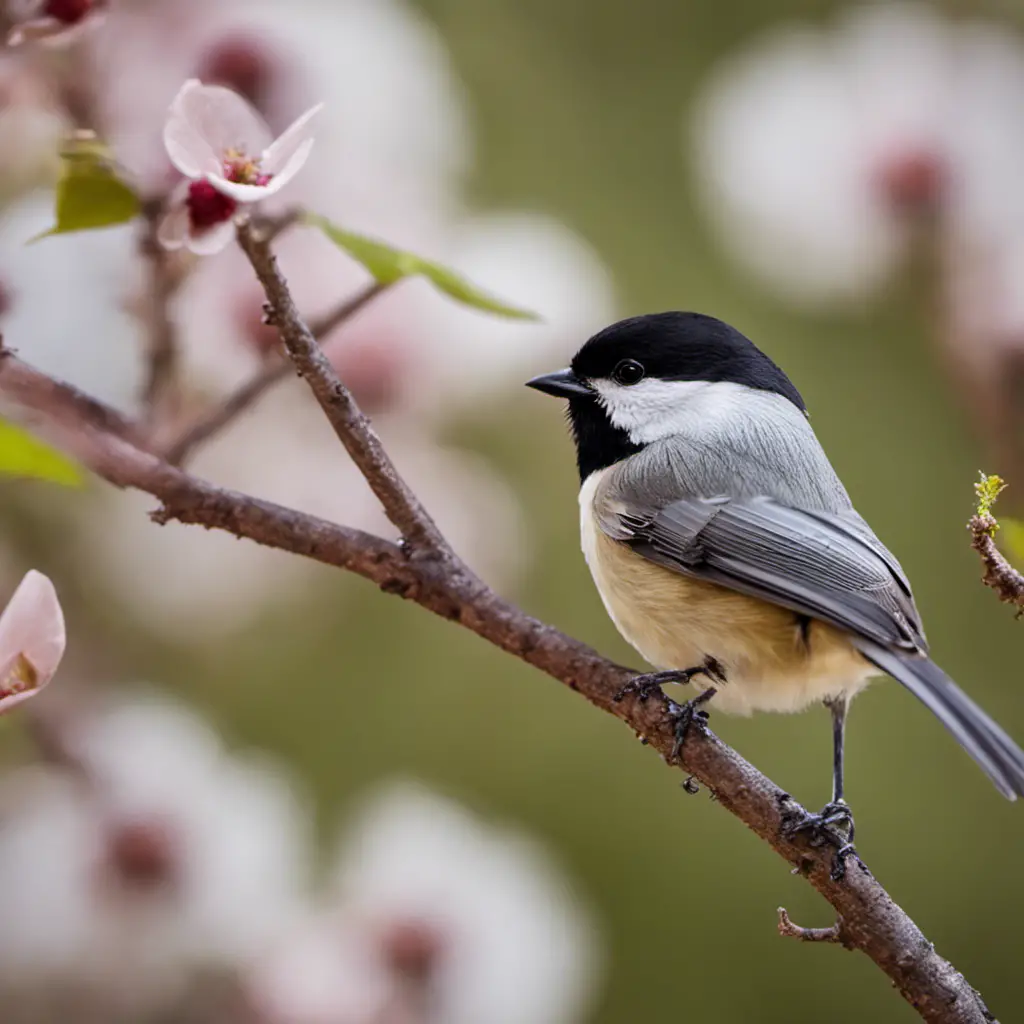
During the winter months, but also in the spring and summer, you can often spot Carolina Chickadees in Virginia.
The Carolina Chickadee (Poecile carolinensis) is a small songbird that belongs to the Paridae family. They’re about 4-5 inches long, with a gray back, white undersides, and a black cap and bib.
Their habitat includes deciduous and mixed forests, where they can be found foraging for insects, seeds, and berries. They’re known for their acrobatic behavior and distinctive chick-a-dee-dee-dee call.
However, the Carolina Chickadee population is facing threats from habitat loss due to deforestation, as well as the spread of diseases like avian pox and West Nile virus.
Conservation efforts are crucial to protect these charming birds and maintain their population in Virginia.
Tufted Titmouse
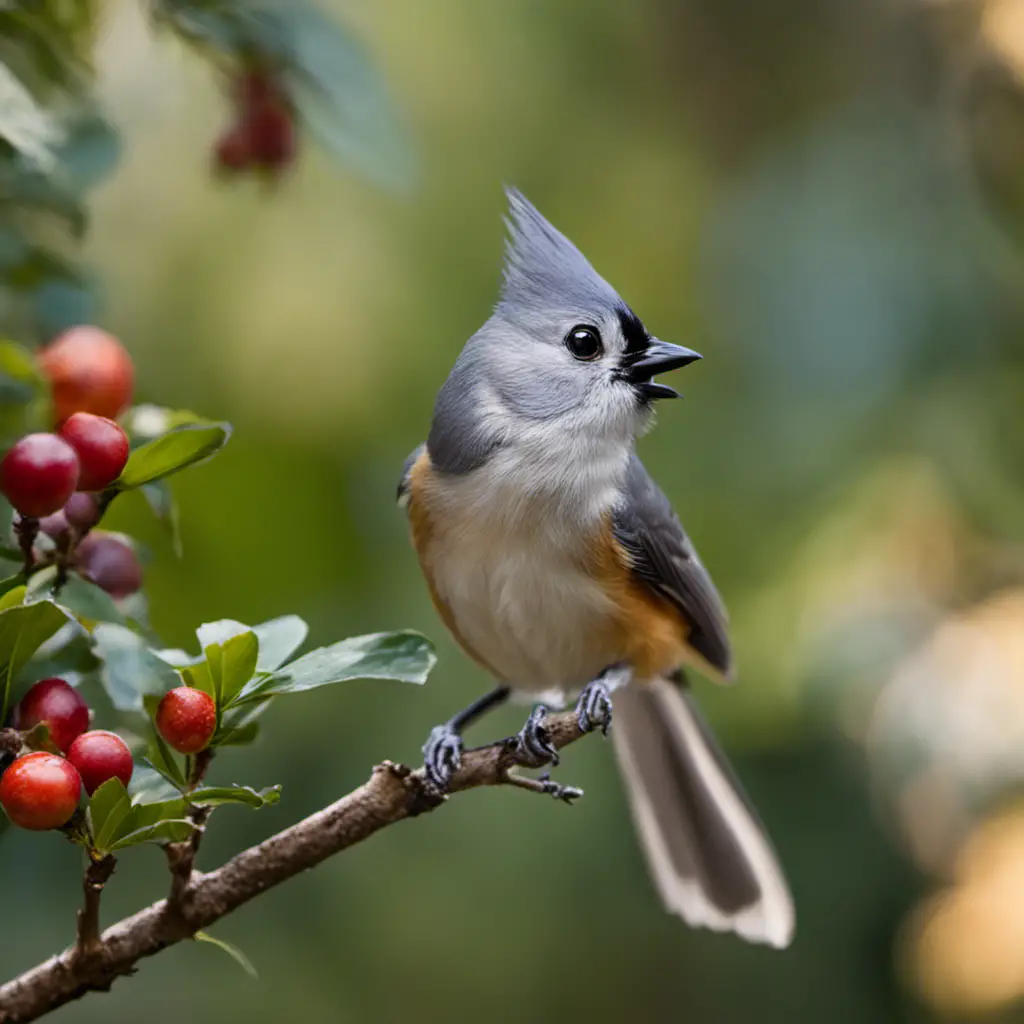
While exploring the forests of Virginia, you’ll often come across the Tufted Titmouse, a small bird known for its distinctive tufted crest and cheerful whistling song. This species exhibits interesting behavior patterns and has specific habitat preferences that contribute to its survival and success in the region.
Behavior patterns:
- The Tufted Titmouse is highly social and often forms small flocks, which helps provide protection against predators.
- They’re acrobatic and agile, adept at hanging upside down while foraging for insects and seeds.
- This bird is known for its curiosity, often investigating its surroundings with a bold and curious demeanor.
- The Tufted Titmouse is a cavity nester, meaning it will seek out tree cavities or birdhouses for nesting and raising its young.
Habitat preferences:
- This species thrives in deciduous and mixed forests, where it can find a variety of food sources and suitable nesting sites.
- They’re particularly fond of oak-hickory forests, but can also be found in suburban areas with mature trees and shrubs.
- The Tufted Titmouse prefers wooded areas with dense undergrowth, providing cover and protection from predators.
- They’re year-round residents of Virginia and can be observed throughout the state, from lowland areas to mountainous regions.
House Finch
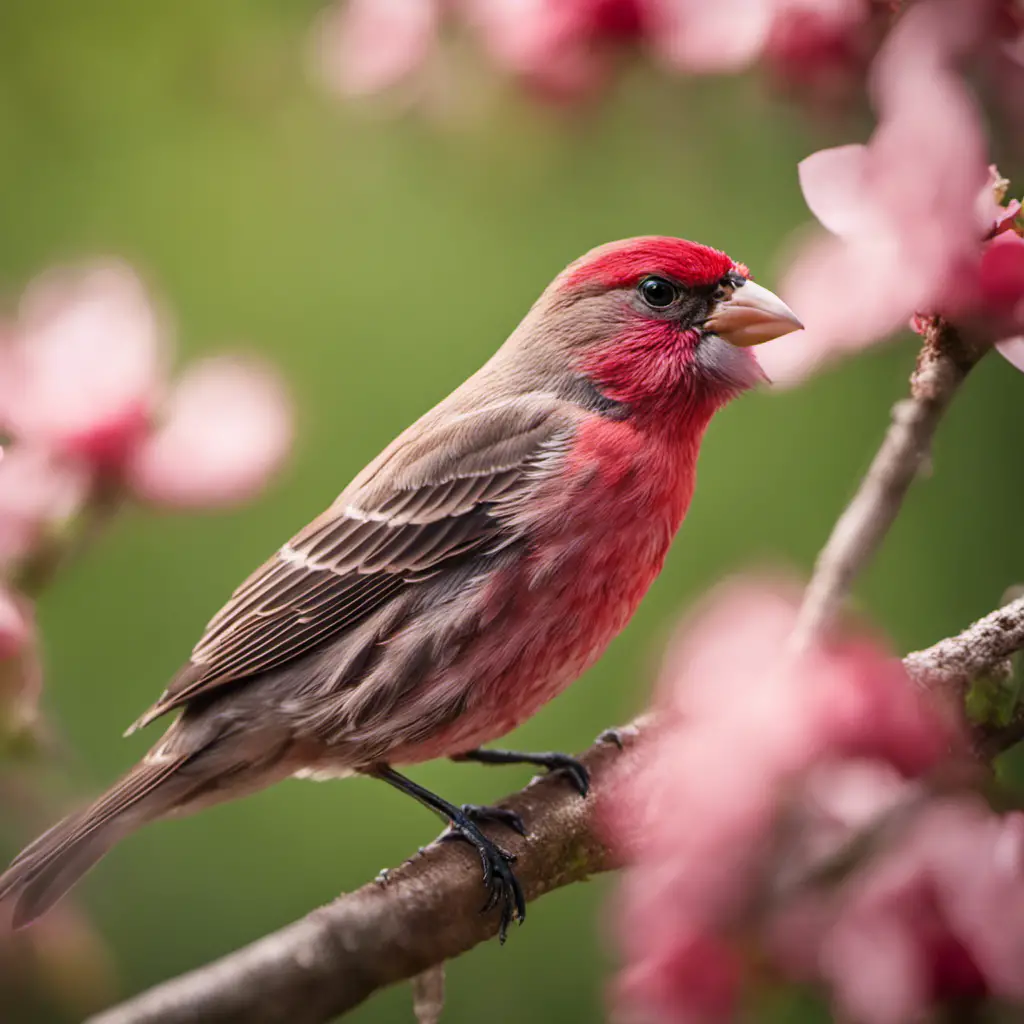
When you spot a flash of vibrant red in your backyard, pause and take a closer look, for it is likely a House Finch. These small, colorful birds are a common sight in Virginia, known for their beautiful plumage and distinctive songs. House Finches have a wide range of behavior patterns, from feeding on seeds and fruits to engaging in elaborate courtship displays. They are highly adaptable and can be found in a variety of habitats, including suburban areas, woodlands, and grasslands. Here is a table summarizing the behavior patterns and habitat preferences of House Finches:
| Behavior Patterns | Habitat Preferences |
|---|---|
| Feeding on seeds and fruits | Suburban areas |
| Elaborate courtship displays | Woodlands |
| Highly adaptable | Grasslands |
Understanding these behavior patterns and habitat preferences can help bird enthusiasts attract House Finches to their own backyard and appreciate their unique characteristics.
Carolina Wren
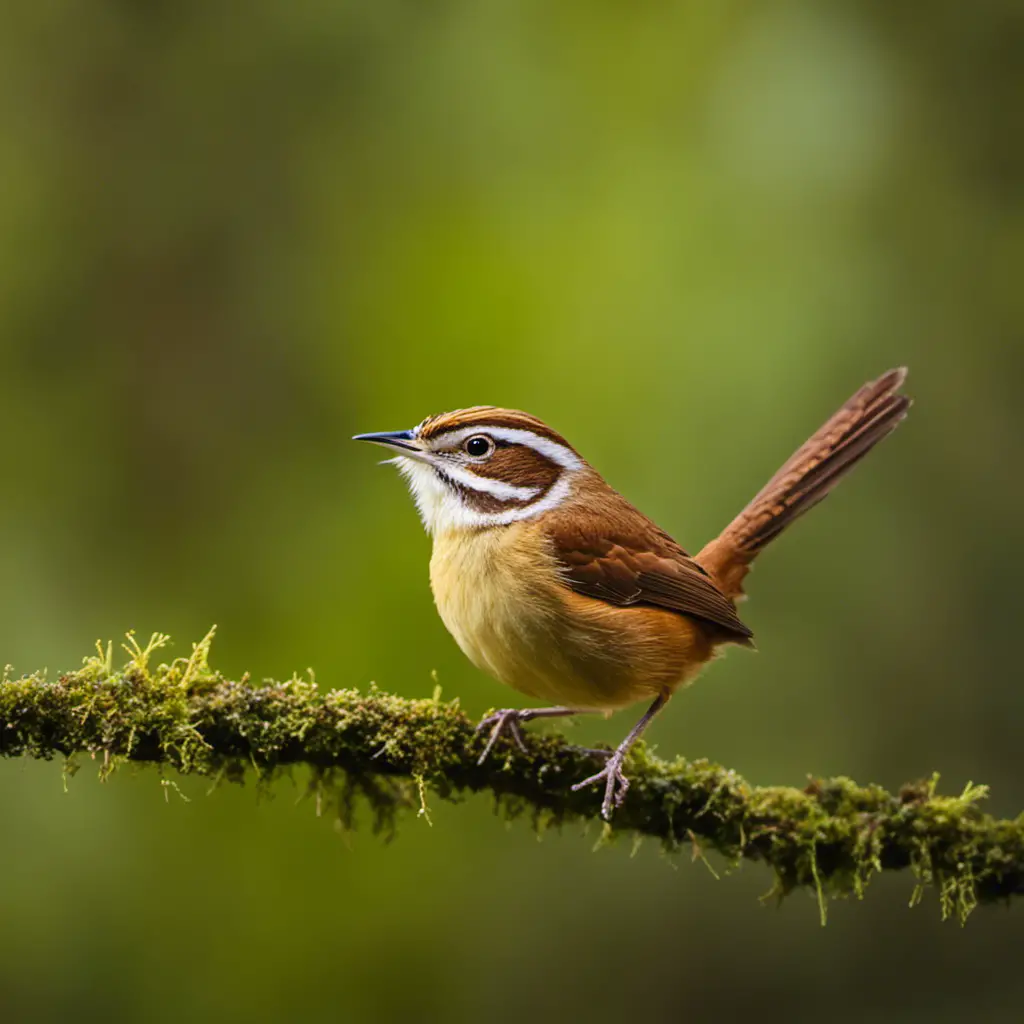
Have you ever wondered what kind of bird can be heard singing its melodious song throughout the forests of Virginia, and can also be spotted exploring your backyard? Look no further than the Carolina Wren. This small, brown bird with a distinctive white eyebrow is a common sight in the state.
Here are some interesting facts about the Carolina Wren:
Habitat preferences: Carolina Wrens can be found in a variety of habitats, including forests, woodlands, and suburban areas. They prefer areas with dense vegetation, such as shrubs and bushes, where they can build their nests.
Breeding behavior: Carolina Wrens are monogamous and form strong pair bonds. They build their nests in cavities, such as tree hollows, birdhouses, or even old shoes left outside. Both the male and female participate in nest building and incubation of the eggs.
With their beautiful songs and adaptable nature, Carolina Wrens are a delightful addition to Virginia’s bird population.
Downy Woodpecker
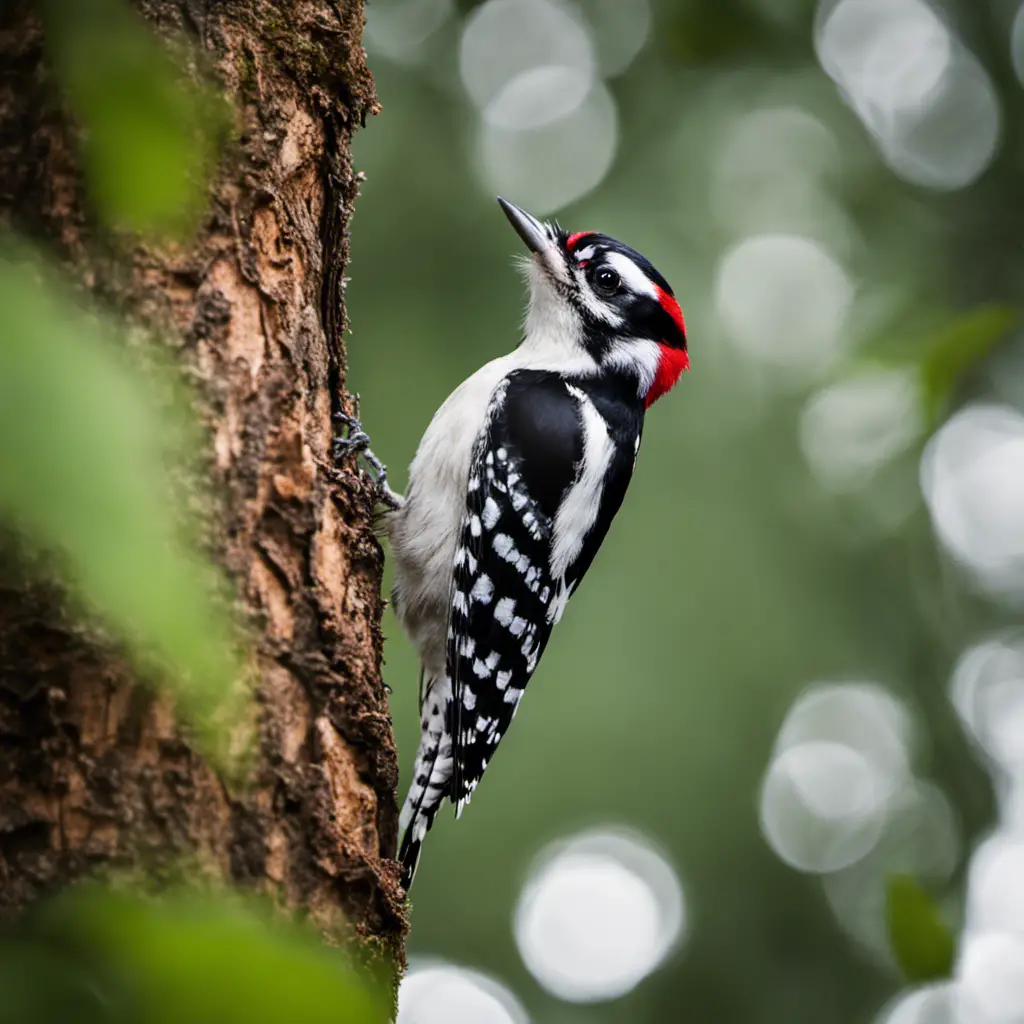
Do you know how many different species of woodpeckers can be found in Virginia?
One of the most common and recognizable species is the Downy Woodpecker. With its black and white plumage and small size, the Downy Woodpecker is easily spotted in forests, woodlands, and even suburban areas throughout Virginia. This species is known for its distinctive drumming sound, which is used to communicate with other woodpeckers and establish territory.
The Downy Woodpecker is a skilled climber, using its strong beak to search for insects and larvae in tree bark. It also has a unique feeding behavior of moving in a spiral pattern around tree trunks, systematically tapping and probing for food. This species prefers deciduous trees, such as oaks and maples, for foraging and nesting.
Next, we’ll explore another fascinating bird species found in Virginia.
Blue Jay

You can easily identify the Blue Jay by its vibrant blue feathers and distinctive crest. This bird’s appearance is truly remarkable, making it a favorite among birdwatchers.
Here are some interesting facts about the Blue Jay:
Habitat: Blue Jays can be found in a variety of habitats, including forests, woodlands, parks, and suburban areas. They’re adaptable birds that can thrive in both rural and urban environments.
Nesting Habits: Blue Jays build their nests in trees, usually in the crotch of a branch. They construct their nests using twigs, grass, and mud. The female Blue Jay is responsible for building the nest, while the male assists by bringing materials.
Predator Prey Relationships: Blue Jays are opportunistic feeders and have a diverse diet. They eat insects, nuts, seeds, fruits, and even small vertebrates. However, they’re also preyed upon by larger birds of prey, such as hawks and owls.
Eastern Bluebird
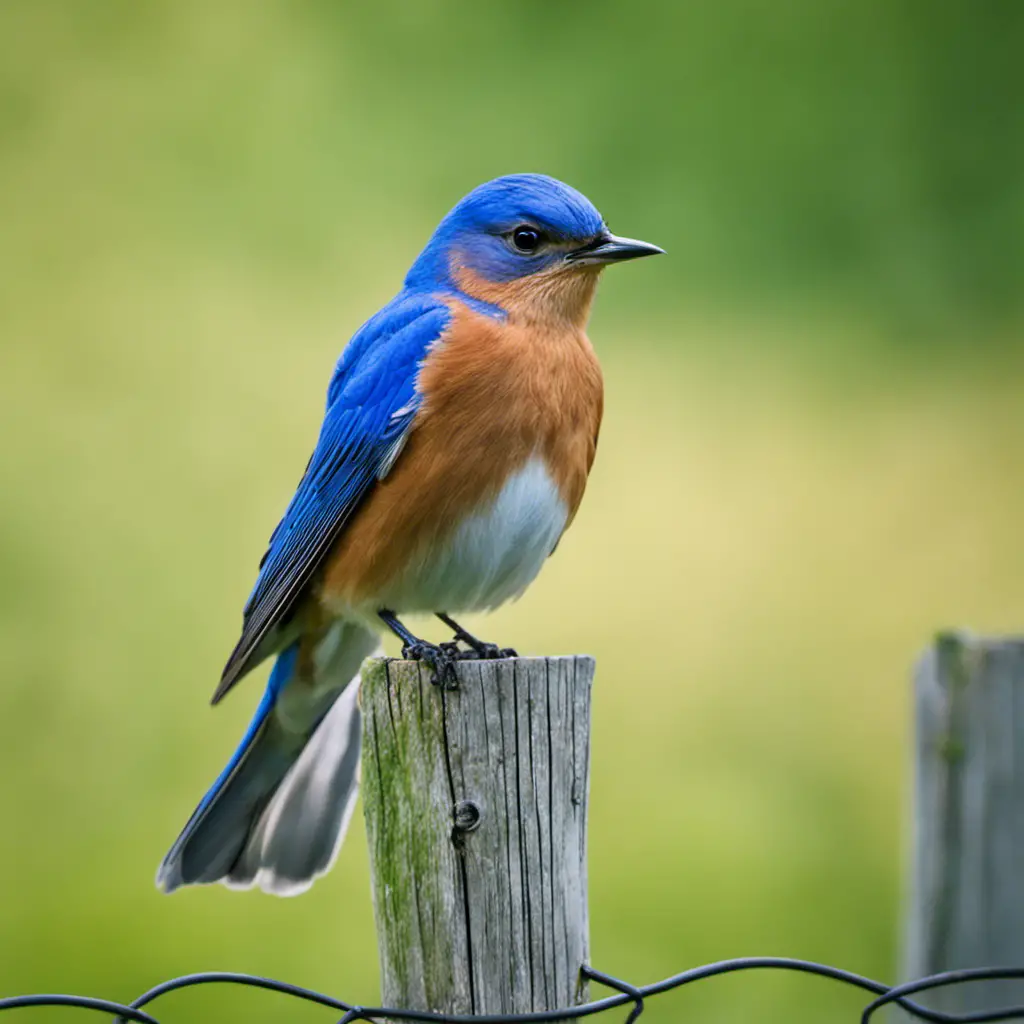
You’ll definitely be captivated by the stunning colors of the Eastern Bluebird. This small songbird, native to Virginia, has a vibrant blue back, rusty-red breast, and white belly.
The Eastern Bluebird can be found in a variety of habitats, including open woodlands, orchards, and meadows. They prefer nesting in tree cavities or man-made nest boxes, and will readily use these artificial structures.
Conservation efforts have played a crucial role in supporting the population of Eastern Bluebirds. In recent years, their numbers have been increasing due to the installation of nest boxes and the protection of their natural habitats.
These efforts have helped to stabilize their population and ensure their continued presence in Virginia.
Red-bellied Woodpecker

The Red-bellied Woodpecker is a common sight in Virginia, and it’s known for its distinctive red cap and black and white striped back. This woodpecker species exhibits interesting behavioral characteristics and thrives in a specific habitat while maintaining a particular diet.
Behavioral characteristics:
They’re highly territorial and will defend their nesting sites vigorously.
They communicate through a series of calls, including a rolling ‘churr’ sound.
They use their strong beaks to drum on trees, claiming territory and attracting mates.
They’ve a unique ability to store food in crevices for later consumption.
Habitat and diet:
Red-bellied Woodpeckers prefer mixed woodlands, forests, and suburban areas with mature trees.
They feed on insects, fruits, nuts, seeds, and occasionally small vertebrates.
They often forage on tree trunks, using their stiff tail feathers for support.
They may also visit bird feeders for suet, nuts, and seeds.
Understanding the behavioral characteristics, habitat preferences, and diet of the Red-bellied Woodpecker can help bird enthusiasts appreciate and attract these fascinating birds in their own surroundings.
Song Sparrow
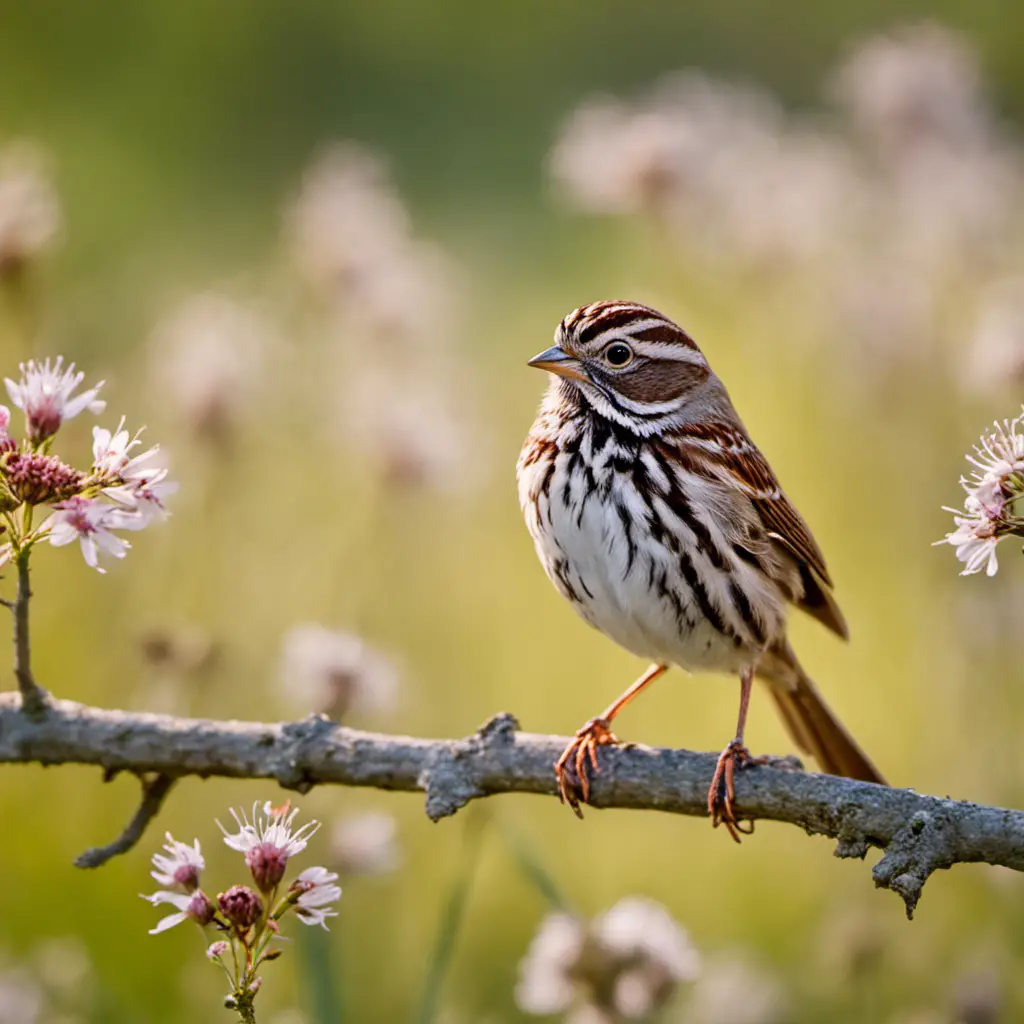
Spotting a Song Sparrow can be a delightful experience for birdwatchers in Virginia. This small bird, scientifically known as Melospiza melodia, is a common resident throughout the state. The Song Sparrow is known for its beautiful melodious song, which it uses to attract mates and defend its territory.
When it comes to nesting habits, Song Sparrows build their cup-shaped nests on the ground, usually hidden in dense vegetation or shrubs. They construct their nests using grasses, leaves, and other plant materials, providing a safe place for their eggs.
In terms of diet and feeding behavior, Song Sparrows are primarily granivorous, feeding on a variety of seeds and grains. However, they also consume insects, spiders, and small invertebrates during the breeding season to provide essential protein for their nestlings. They forage on the ground, using their bill to search for food among the vegetation or pecking at the soil surface.
White-breasted Nuthatch
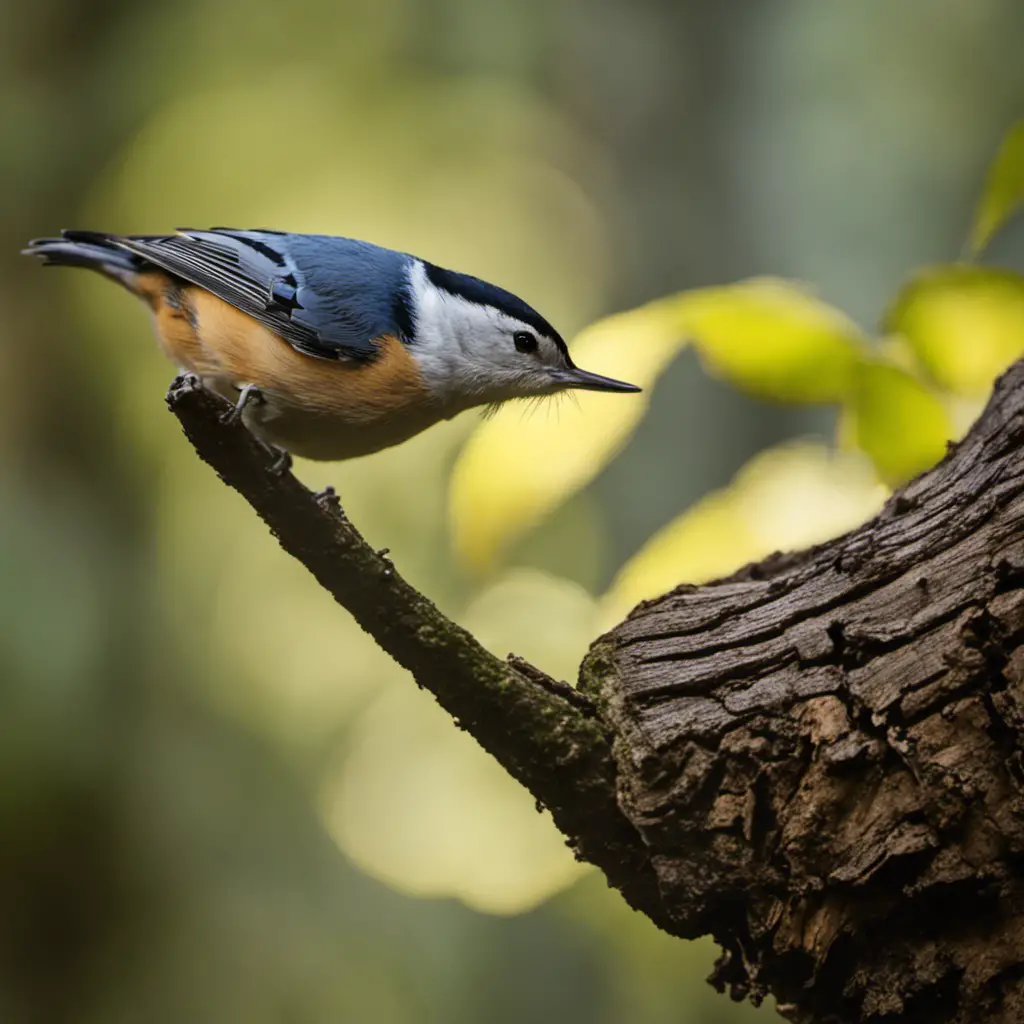
To get a closer look at the White-breasted Nuthatch, you can observe it in your backyard or at local parks and forests. This small bird is known for its unique behaviors and can easily be identified by its white underparts and blue-gray upperparts.
Here are some key points about the White-breasted Nuthatch:
Behavioral characteristics:
Climbs down tree trunks head-first
Taps on bark to find insects
Stores food in tree crevices
Forms monogamous pairs during breeding season
Habitat and diet:
Prefers mature forests with deciduous trees
Feeds on insects, nuts, and seeds
Often visits bird feeders for suet and sunflower seeds
Builds nests in tree cavities, using mud to seal entrances
European Starling
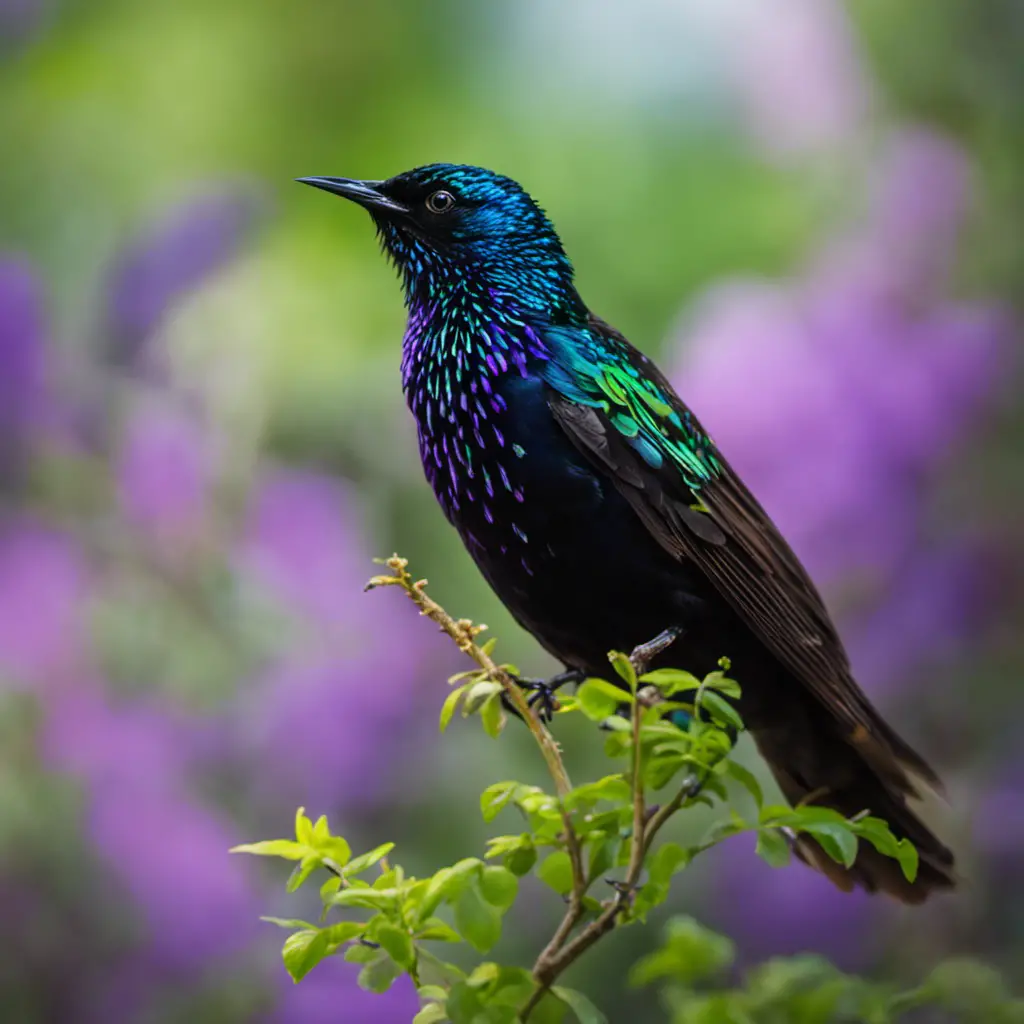
You can easily spot European Starlings in Virginia, as they’re a common and widespread bird species. European Starlings, scientifically known as Sturnus vulgaris, are medium-sized birds with distinct features. They’ve a blackish plumage, speckled with white spots, and a short tail. These birds are highly adaptable and can thrive in a variety of habitats, including urban areas, farmlands, and forests.
European Starlings are known for their unique predation patterns. They’ve a diverse diet that includes fruits, seeds, insects, and even small vertebrates. They’re also known to raid the nests of other birds, consuming their eggs and nestlings. This behavior has led to their classification as an invasive species in some regions.
In terms of migration habits, European Starlings exhibit a partially migratory behavior. While some populations migrate long distances during the winter months, others remain in their breeding territories year-round. These birds form large flocks during migration, often gathering in impressive murmurations that create mesmerizing aerial displays.
Common Grackle
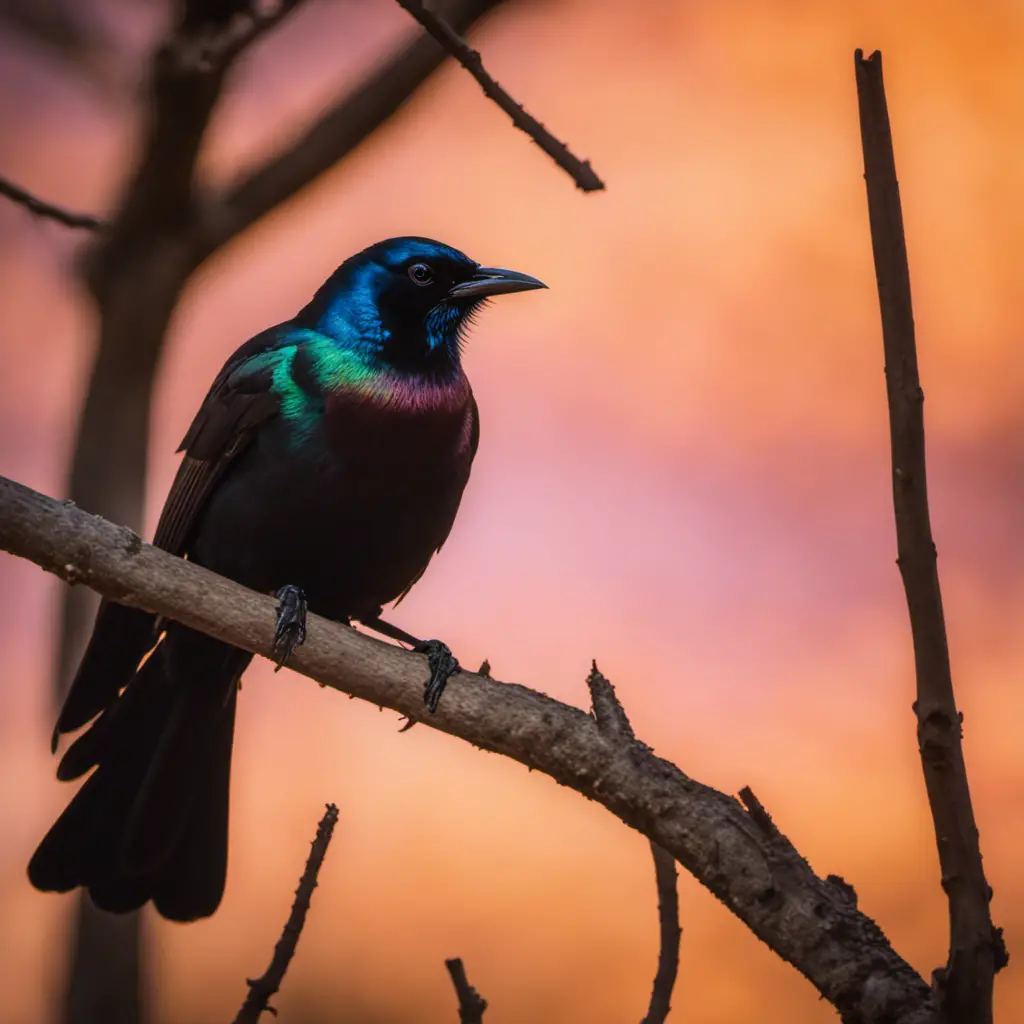
You’ll often find Common Grackles in Virginia, as they’re a widespread bird species. These birds have distinct features that make them easily identifiable. Here are some key characteristics of Common Grackles:
They’ve long tails and a sleek black plumage with an iridescent sheen, which shines green and purple in the sunlight.
Common Grackles prefer habitats such as open woodlands, meadows, and suburban areas with scattered trees.
During breeding season, males gather in large groups called colonies and perform elaborate courtship displays to attract females.
Females build cup-shaped nests made of vegetation and mud, usually located in trees or shrubs.
Understanding the habitat preferences and breeding behavior of Common Grackles is essential for bird enthusiasts and researchers alike. By studying these birds, we can gain valuable insights into their ecology and contribute to their conservation efforts in Virginia.
House Sparrow
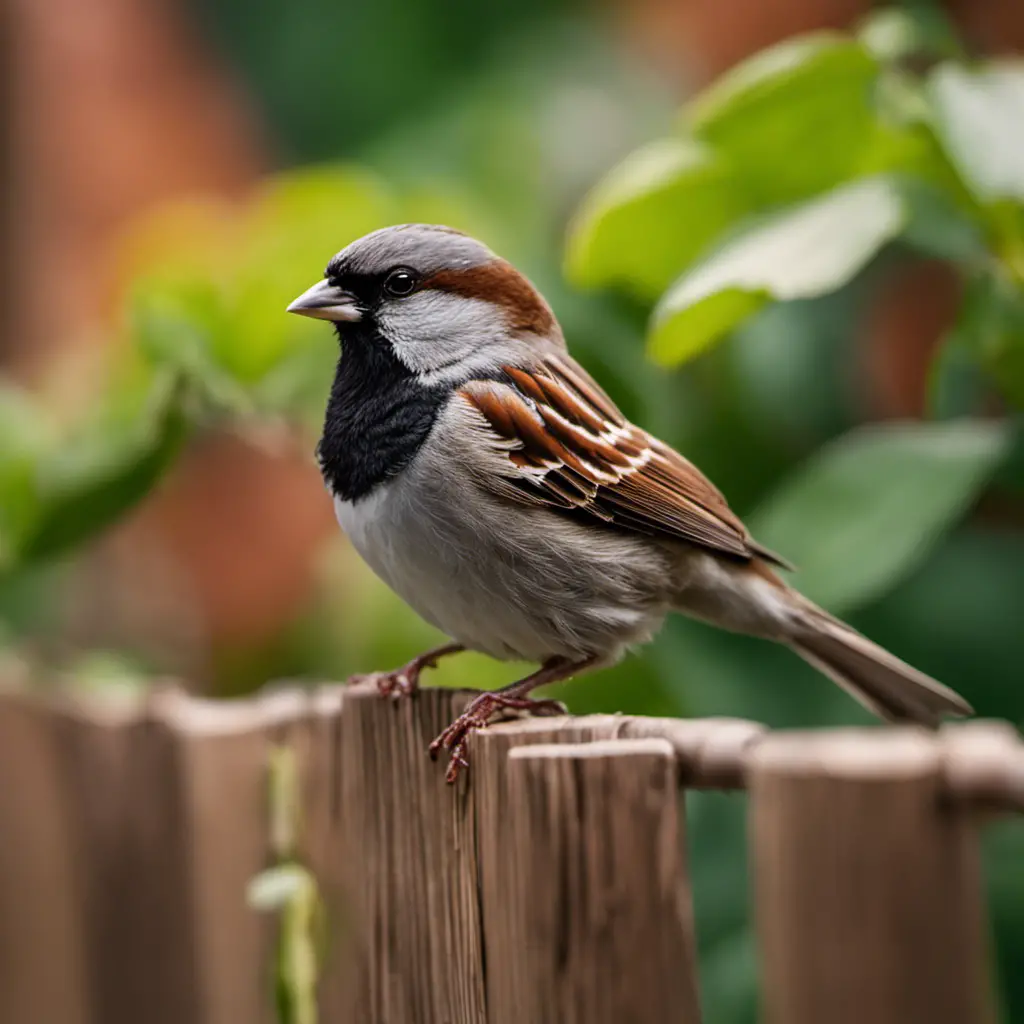
A common sight in Virginia, the House Sparrow is a small bird that’s known for its adaptability and widespread presence. The House Sparrow, scientifically known as Passer domesticus, is native to Eurasia but has successfully established populations in various parts of North America, including Virginia.
This species is highly adaptable and can be found in a wide range of habitats, including urban areas, farmlands, and grasslands. However, House Sparrows are most commonly observed in close proximity to human settlements, where they benefit from the availability of food and nesting sites.
When it comes to breeding behavior, House Sparrows are known for their colonial nesting habits, often nesting in small groups in cavities such as tree holes, nest boxes, or building crevices. They’re prolific breeders, with females usually laying multiple clutches of eggs throughout the breeding season.
The House Sparrow is a fascinating species to observe in Virginia due to its ability to thrive in diverse environments and its interesting breeding behavior.
American Goldfinch
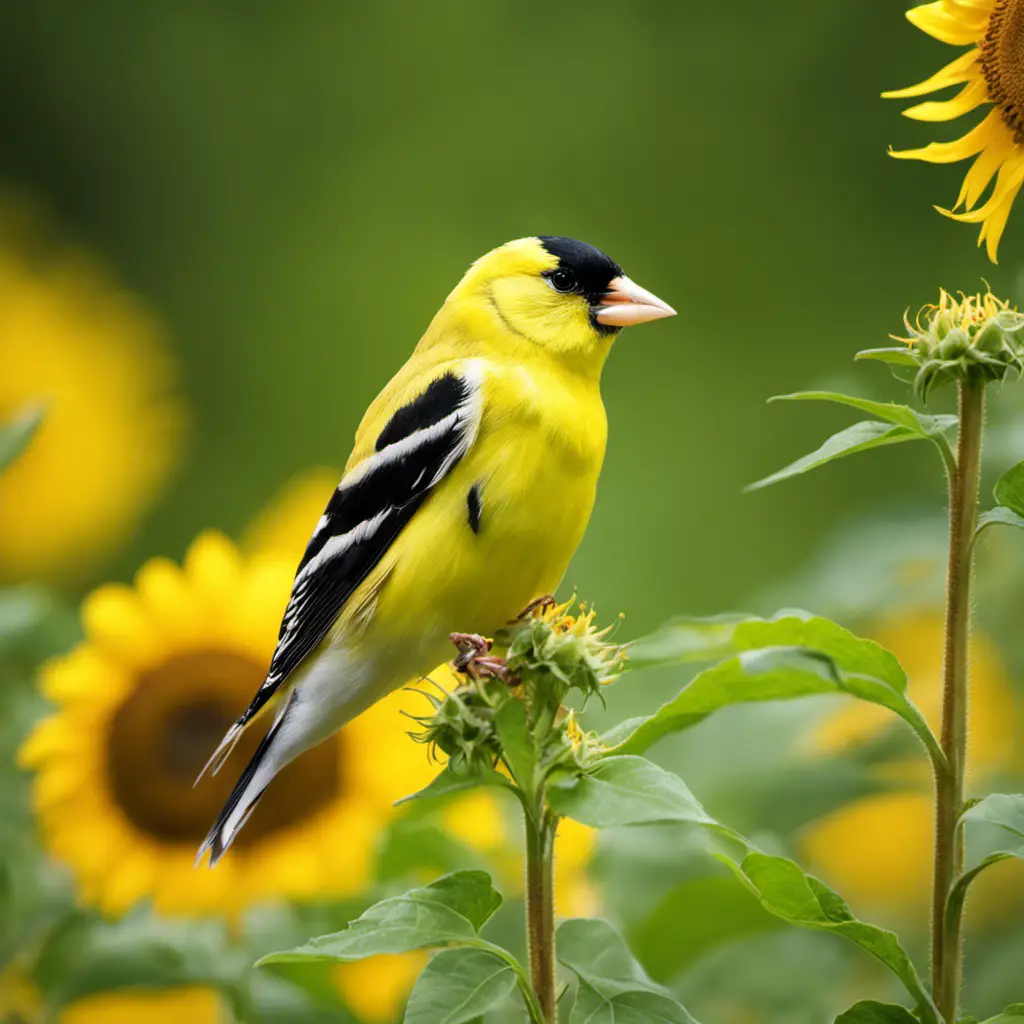
During the summer months, you’ll often spot the American Goldfinch in Virginia’s fields and meadows. This small, vibrant bird is known for its bright yellow plumage and distinctive black wings.
Here are some key aspects of the American Goldfinch’s habitat, diet, breeding behavior, and migration patterns:
Habitat: American Goldfinches prefer open areas with abundant vegetation, such as fields, meadows, and gardens. They can also be found in orchards and woodland edges.
Diet: These finches primarily feed on seeds, particularly those of thistles and sunflowers. They also consume insects during the breeding season to provide additional protein for their young.
Breeding Behavior: The American Goldfinch is a late breeder, typically nesting in July or August. They build cup-shaped nests in trees or shrubs, often using plant fibers and spider silk.
Migration Patterns: Unlike many other birds, American Goldfinches undergo a molt and change in plumage during the late summer. They migrate southward in flocks during the winter, returning to their breeding grounds in the spring.
Observing the American Goldfinch in its natural habitat can provide a fascinating glimpse into the life of this captivating bird.
Eastern Towhee
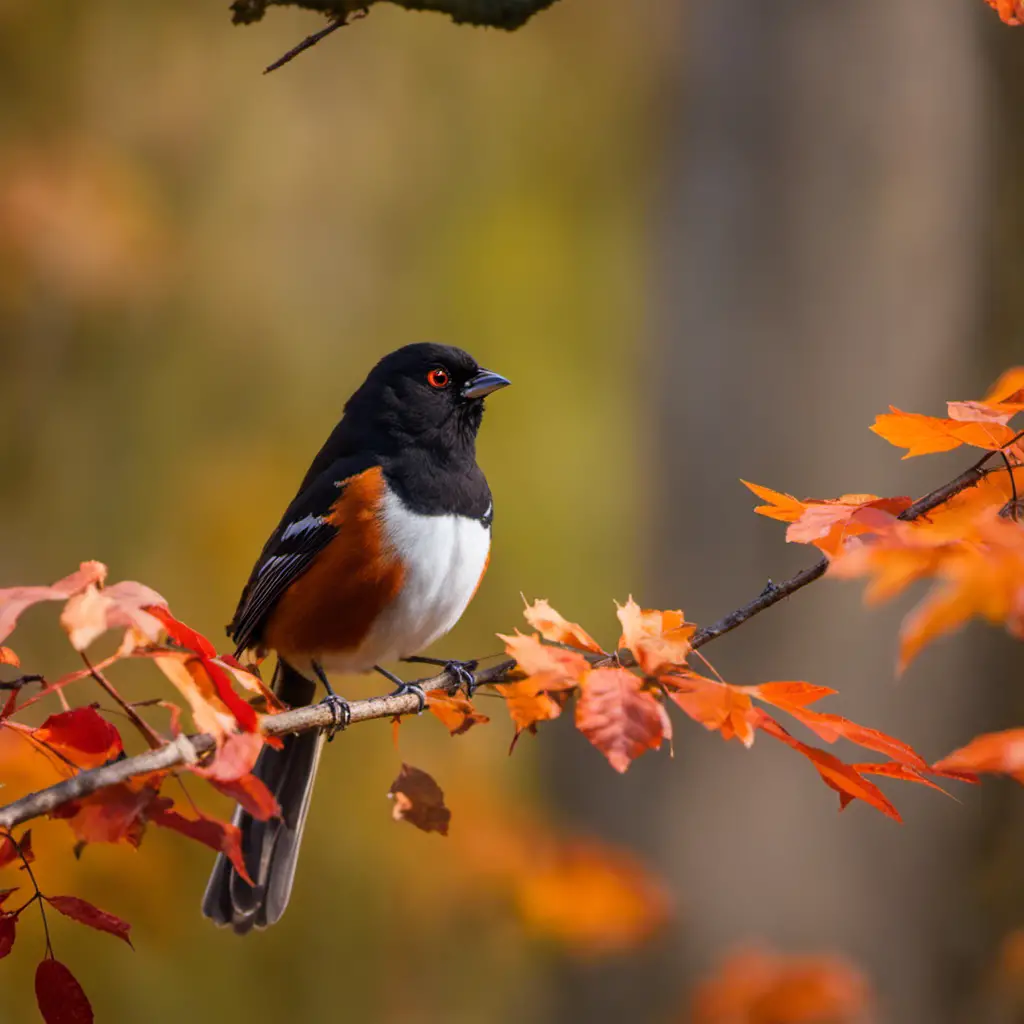
You can easily recognize the Eastern Towhee by its distinctive call and striking black and orange plumage. This medium-sized bird is commonly found in the eastern parts of North America, including Virginia. The Eastern Towhee prefers dense shrubby areas and thickets, such as forest edges, overgrown fields, and scrubby brush. It is often seen scratching through leaf litter on the ground, searching for insects, seeds, and berries. This bird is known for its behavior of hopping and scratching backward, using both feet at once. During breeding season, the male Eastern Towhee sings a clear "drink-your-tea" song to attract a mate. They build their nests on the ground or low in shrubs, using twigs, leaves, and grasses. The female lays 2-6 eggs, which she incubates for about 14 days. Once the chicks hatch, both parents take turns feeding and caring for them until they fledge after about 9-11 days.
| Eastern Towhee | |
|---|---|
| Size | About 8 inches |
| Habitat | Dense shrubby areas |
| Diet | Insects, seeds, berries |
| Song | "Drink-your-tea" |
| Nesting | On the ground or low in shrubs |
| Eggs | 2-6, incubated for about 14 days |
Chipping Sparrow
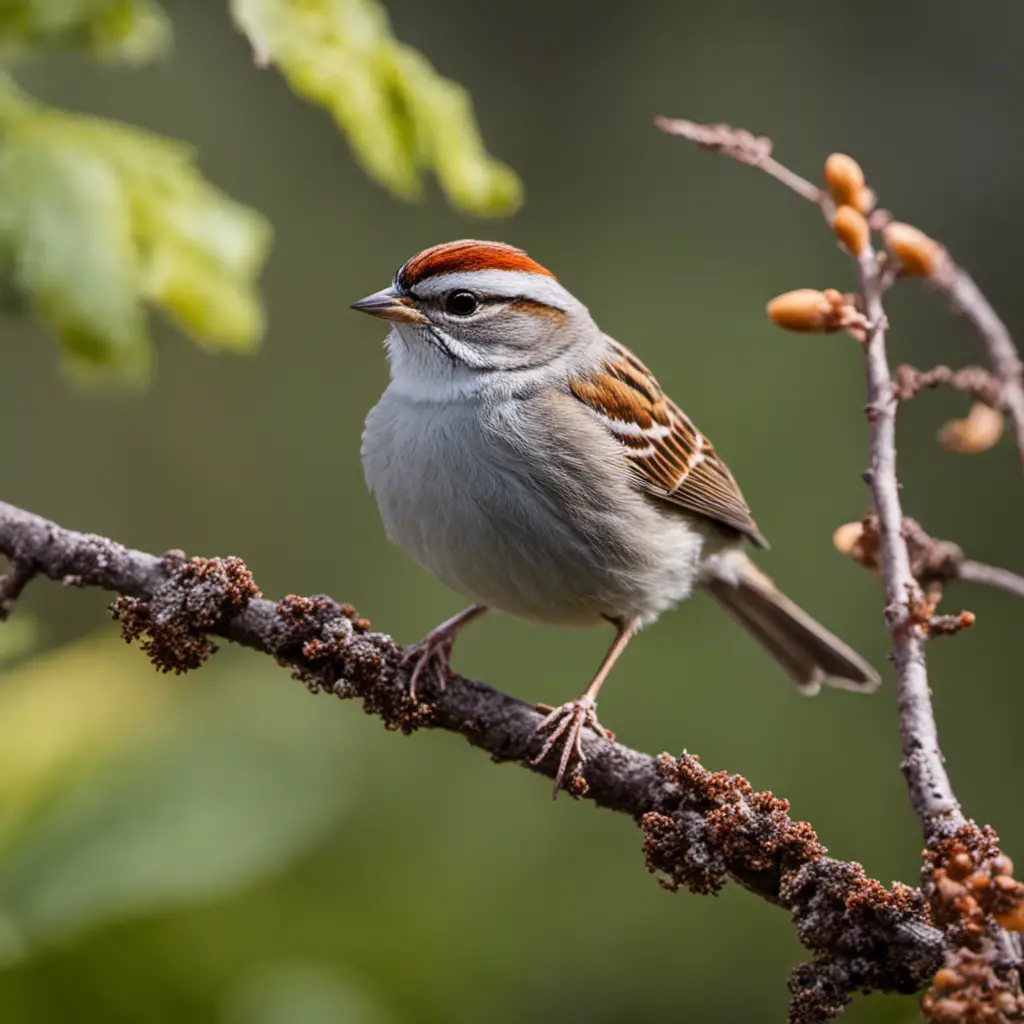
The Chipping Sparrow is a small bird that can be easily identified by its reddish cap and distinct chipping sound. This species exhibits several interesting behavioral patterns and has specific habitat preferences.
Behavioral patterns:
Chipping Sparrows are known for their frequent chipping calls, which resemble the sound of a sewing machine.
They’re primarily ground foragers, searching for seeds, insects, and berries.
During the breeding season, males engage in elaborate courtship displays, including vertical flights and song performances.
Chipping Sparrows are social birds and often form loose flocks outside the breeding season.
Habitat preferences:
These sparrows prefer open woodlands and forest edges, as well as gardens and parks with scattered trees.
They’re commonly found nesting in shrubs, small trees, or low branches.
Chipping Sparrows are adaptable and can also be found in urban areas with suitable vegetation.
Understanding the behavioral patterns and habitat preferences of the Chipping Sparrow contributes to our knowledge of this species and its role in Virginia’s avian community.
Northern Mockingbird
Can you guess why the Northern Mockingbird is such a talented singer?
The Northern Mockingbird, scientifically known as Mimus polyglottos, possesses an impressive vocal repertoire due to its unique behavioral patterns.
This bird is known for its ability to imitate the sounds of other birds and even non-avian sounds, such as car alarms or cell phone ringtones.
This mimicry is a result of the mockingbird’s complex vocal muscles and keen auditory abilities.
In terms of habitat, the Northern Mockingbird is commonly found in open areas such as suburban gardens, parks, and fields throughout Virginia.
As for its diet, this species primarily feeds on insects, fruits, and berries, but it’s also known to eat small reptiles and amphibians.
Understanding the Northern Mockingbird’s behavioral patterns, habitat, and diet helps us appreciate its incredible vocal talents and adaptability in Virginia’s diverse environments.
Brown-headed Cowbird
Surely, you must be curious about the Brown-headed Cowbird, as it’s an intriguing species found in Virginia. This bird has some unique breeding behavior that sets it apart from other species. Here are a few key points about the Brown-headed Cowbird:
- The female cowbird lays her eggs in the nests of other bird species.
- The cowbird eggs often hatch earlier than the host bird’s eggs, giving the cowbird chicks a head start in receiving food and care.
- Cowbird chicks are known to outcompete the host bird’s chicks for resources, leading to a reduced survival rate for the host bird’s offspring.
- The impact of Brown-headed Cowbirds on other bird species can be detrimental, as they may disrupt the breeding success of smaller songbirds.
Understanding the breeding behavior and impact of Brown-headed Cowbirds is crucial for conservation efforts and maintaining the balance of bird populations in Virginia.
Indigo Bunting
You may have noticed the vibrant blue feathers of the Indigo Bunting as it flies through the forests and meadows of Virginia. This small songbird, scientifically known as Passerina cyanea, is a common summer resident in the state. The Indigo Bunting has distinct habitat preferences, often selecting open woodlands, brushy areas, and fields for nesting and foraging. Its breeding behavior is also fascinating. Males perform elaborate courtship displays, singing their melodious songs from high perches to attract females. Once a pair is formed, the female builds the nest while the male defends the territory. The nest is cup-shaped and constructed from grasses, leaves, and bark strips. The female lays and incubates a clutch of three to four eggs. The Indigo Bunting is truly a remarkable species to observe in Virginia’s natural landscapes.
| Column 1 | Column 2 | Column 3 | |
|---|---|---|---|
| Row 1 | Common Name | Scientific Name | Habitat |
| Row 2 | Indigo Bunting | Passerina cyanea | Open woodlands, brushy areas, fields |
| Row 3 |
Ruby-throated Hummingbird
Take a moment to admire the breathtaking beauty of the Ruby-throated Hummingbird as it flits and hovers among the flowers of Virginia. This tiny bird, weighing only a few grams, exhibits fascinating migration patterns and feeding habits.
Ruby-throated Hummingbirds migrate between their breeding grounds in eastern North America and their wintering grounds in Central America. They make an incredible non-stop flight across the Gulf of Mexico, covering around 500 miles in one go.
These hummingbirds are known for their nectar-feeding behavior. They’ve long, slender bills adapted for reaching deep into the flowers to extract nectar. They also feed on insects and spiders, providing a protein-rich diet.
To fuel their high-energy lifestyle, Ruby-throated Hummingbirds consume up to twice their body weight in nectar and insects each day.
Their feeding habits are crucial for pollinating flowers, as they unintentionally transfer pollen while moving from one flower to another.
Yellow Warbler
When and where can you spot the vibrant Yellow Warbler in Virginia, and what makes it unique among other bird species?
The Yellow Warbler, scientifically known as Setophaga petechia, can be found in Virginia during the summer months, typically from late April to early September. This small songbird is known for its bright yellow plumage, with males displaying reddish streaks on their chest.
The Yellow Warbler prefers habitats with dense shrubs and trees near wetlands, marshes, and rivers, which provide plenty of insects and nesting sites. When it comes to migration, this species undertakes long-distance journeys, traveling from their breeding grounds in North America to their wintering grounds in Central and South America.
During migration, they can be spotted in various locations across Virginia, adding to the diversity of bird species in the state.
Gray Catbird
You’ll often spot the Gray Catbird in Virginia’s forests and gardens, thanks to its distinctive appearance and melodious calls. This medium-sized songbird, with a slate gray body and a black cap, is known for its cat-like mewing sound, hence its name.
Here are some interesting facts about the gray catbird:
Habitat and diet of gray catbirds:
They prefer areas with dense shrubs and thickets, such as forest edges and gardens.
Their diet mainly consists of insects, berries, and fruits.
Behavior and mating habits of gray catbirds:
Gray catbirds are known for their secretive nature and tend to stay hidden in dense vegetation.
During mating season, males will perform elaborate courtship displays, singing loudly and hopping around to attract females.
Observing the gray catbird in its natural habitat can provide a fascinating glimpse into the lives of these unique avian creatures.
Red-winged Blackbird
Have you ever witnessed the striking red and yellow shoulder patches of a Red-winged Blackbird in Virginia? These beautiful birds can be found in a variety of habitats throughout the state. Red-winged Blackbirds prefer wetland areas such as marshes, swamps, and ponds, where they can easily find food and build their nests. They’re also commonly seen in open fields and meadows.
During the breeding season, male Red-winged Blackbirds defend their territories by displaying their vibrant shoulder patches and singing loudly. They construct their nests in dense vegetation, usually near water, using materials like grass, leaves, and mud. Females lay 3 to 4 eggs, which they incubate for about two weeks. Once hatched, the parents diligently feed their chicks a diet consisting of insects, seeds, and small vertebrates.
The Red-winged Blackbird is an interesting species to observe, with its habitat preferences and unique breeding behavior. By understanding their needs and behaviors, we can appreciate these birds and help protect their habitats.
Cedar Waxwing
If you spot a flock of Cedar Waxwings in Virginia, you’ll be amazed by their distinctive plumage and synchronized flight patterns. These beautiful birds have a soft brown color on their backs, a yellow belly, and a black mask across their eyes. They’re known for their sleek appearance and elegant flight.
Discussion ideas about the cedar waxwing:
Breeding habits and nesting behavior: Cedar Waxwings are monogamous, meaning they mate with only one partner for life. They build their nests in trees using twigs, grass, and moss. Both the male and female participate in incubating the eggs and feeding the chicks.
Role in seed dispersal and its impact on ecosystems: Cedar Waxwings play a crucial role in seed dispersal. They’ve a special adaptation in their digestive system that allows them to eat fruits and berries. After consuming the fruit, they disperse the seeds through their droppings, helping to spread plant diversity and maintain healthy ecosystems.
Cedar Waxwings are fascinating birds that contribute to the biodiversity and balance of Virginia’s natural habitats.
Baltimore Oriole
Sometimes you can spot a Baltimore Oriole in Virginia with its vibrant orange and black plumage. The Baltimore Oriole is a migratory bird that can be found in a variety of habitats throughout the state. They prefer habitats with tall trees such as forests, woodlands, and parks. During the breeding season, they build their nests in the upper canopies of these trees.
Baltimore Orioles are known for their long-distance migrations. In the spring, they travel from their wintering grounds in Central and South America to their breeding grounds in North America, including Virginia. In the fall, they migrate back to their wintering grounds. These migration patterns allow them to take advantage of the seasonal availability of food and suitable nesting sites.
Great Crested Flycatcher
You can often see the Great Crested Flycatcher in Virginia during the summer months, as they migrate to the state to breed and raise their young. This bird has distinctive behavioral patterns and habitat preferences that make it unique.
Behavioral patterns:
- Great Crested Flycatchers are known for their loud calls, which they use to communicate with each other and defend their territory.
- They’re also skilled at catching flying insects mid-air, using their sharp beaks and agile flight.
- These flycatchers are known for their nest defense behavior, where they vigorously defend their nests by mimicking the calls of predators to deter potential threats.
Habitat preferences:
- The Great Crested Flycatcher prefers deciduous forests and woodlands, where they can find suitable nesting sites in tree cavities.
- They’re often found at the forest edges, as they rely on open areas to catch insects.
- This bird species also shows a preference for areas with tall trees, as they use these perches to spot their prey and launch their aerial attacks.
Eastern Phoebe
The Eastern Phoebe’s distinctive call and nesting habits make it a fascinating bird to observe in Virginia. This small, migratory bird is known for its distinctive ‘phoebe’ call, which it repeats in quick succession. Eastern Phoebes typically arrive in Virginia in early spring, after migrating from their wintering grounds in the southern United States and Central America. They’re known to prefer nesting in protected areas, such as under bridges, in barns, or on ledges.
The Eastern Phoebe constructs a nest made of mud and moss, which is lined with soft materials like feathers or grass. They often choose locations near water, as their diet consists mainly of insects, which they catch by perching and making short flights to capture their prey.
Observing the Eastern Phoebe’s migration patterns and nesting habits provides valuable insights into the behavior and ecology of this species in Virginia.
Frequently Asked Questions
Are Any of These Bird Species Considered Endangered or Threatened in Virginia?
There are laws protecting endangered species and conservation efforts in Virginia. These initiatives aim to preserve the biodiversity and habitats of various bird species. Some of these birds may be considered endangered or threatened.
What Is the Typical Lifespan of the Birds Mentioned in the Article?
The typical lifespan of the birds mentioned in the article varies depending on the species. Some may live for only a few years, while others can live for several decades.
Do Any of These Bird Species Migrate During Certain Seasons?
Yes, some bird species mentioned in the article do migrate during certain seasons. Their migration patterns vary, and understanding them is crucial for bird conservation efforts.
Are There Any Specific Behaviors or Characteristics That Make These Birds Unique in Comparison to Other Bird Species?
Bird watching is a fascinating hobby that allows you to observe unique bird behaviors and characteristics. By studying birds, you contribute to bird conservation efforts, helping to protect these special species for future generations.
What Is the Preferred Habitat or Nesting Locations for These Bird Species in Virginia?
When considering the preferred nesting locations for bird species in Virginia, it is important to understand the specific habitats they require. Different species have varying preferences, which contribute to their successful reproduction and survival.
Conclusion
In conclusion, Virginia is home to a diverse array of bird species. From the iconic American Robin and Northern Cardinal to the elegant Baltimore Oriole and Cedar Waxwing, these birds bring color and life to the state’s landscapes.
The Carolina Chickadee and Tufted Titmouse add their cheerful songs, while the Mourning Dove and Eastern Phoebe provide a soothing presence. Virginia’s bird population is a testament to the state’s rich biodiversity and offers endless opportunities for birdwatching enthusiasts.

An avid ornithologist, zoologist and biologist with an unwavering passion for birds and wild animals.
Dr. Wilson’s journey in ornithology began in childhood and led him to obtain a Ph.D. in Ornithology from the prestigious Avian Research Institute. He has worked closely with renowned experts in the field and conducted extensive research and field studies globally.

